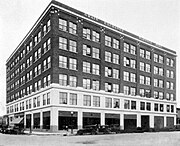
A commodity market is a market that trades in the primary economic sector rather than manufactured products, such as cocoa, fruit and sugar. Hard commodities are mined, such as gold and oil. Futures contracts are the oldest way of investing in commodities. Commodity markets can include physical trading and derivatives trading using spot prices, forwards, futures, and options on futures. Farmers have used a simple form of derivative trading in the commodity market for centuries for price risk management.

The Midwestern United States, also referred to as the Midwest or the American Midwest, is one of four census regions of the United States Census Bureau. It occupies the northern central part of the United States. It was officially named the North Central Region by the Census Bureau until 1984. It is between the Northeastern United States and the Western United States, with Canada to the north and the Southern United States to the south.

A futures exchange or futures market is a central financial exchange where people can trade standardized futures contracts defined by the exchange. Futures contracts are derivatives contracts to buy or sell specific quantities of a commodity or financial instrument at a specified price with delivery set at a specified time in the future. Futures exchanges provide physical or electronic trading venues, details of standardized contracts, market and price data, clearing houses, exchange self-regulations, margin mechanisms, settlement procedures, delivery times, delivery procedures and other services to foster trading in futures contracts. Futures exchanges can be organized as non-profit member-owned organizations or as for-profit organizations. Futures exchanges can be integrated under the same brand name or organization with other types of exchanges, such as stock markets, options markets, and bond markets. Non-profit member-owned futures exchanges benefit their members, who earn commissions and revenue acting as brokers or market makers. For-profit futures exchanges earn most of their revenue from trading and clearing fees.
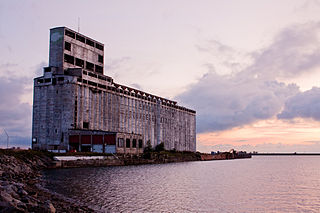
A grain elevator is a facility designed to stockpile or store grain. In the grain trade, the term "grain elevator" also describes a tower containing a bucket elevator or a pneumatic conveyor, which scoops up grain from a lower level and deposits it in a silo or other storage facility.
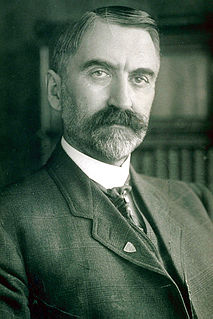
Hiram Martin Chittenden was an American engineer and historian. A graduate of West Point, he was the Seattle district engineer for the Army Corps of Engineers from 1906 to 1908). Chittenden was one of the first three elected Port Commissioners at the Port of Seattle. He also helped found the Pacific Coast Association of Port Authorities, later known as the Association of Pacific Ports in 1913. The Hiram M. Chittenden Locks in Seattle are named in his honor.
Iowa is in the tallgrass prairie of the North American Great Plains, historically inhabited by speakers of Siouan languages. The area of Sioux City, Iowa was inhabited by Yankton Sioux when it was first reached by Spanish and French furtrappers in the 18th century. In 1803, during the presidency of Thomas Jefferson, France sold a vast portion of central North America to the United States of America. This "Louisiana Purchase" was largely unexplored by white settlers. Jefferson sent out the Corps of Discovery, under Lewis and Clark, to scientifically document the territory. In 1804 the Lewis and Clark expedition traveled up the Missouri and set-up camp near what would become Sioux City, Iowa. On August 20, a member of the expedition, Sgt. Charles Floyd died of "bilous colic" and was buried on a bluff overlooking the river. At the time of Lewis and Clark, the Omaha tribe of Native Americans were present just downstream from this region, and the Yankton Sioux were upstream. William Thompson established a trading post near Floyd's Bluff in 1848, and had early ambitions for founding a city. However, Thompson's hopes were never realized; settlers further upriver, between the Floyd and Big Sioux rivers, met with more success.

The Future Trading Act of 1921 was a United States Act of Congress, approved on August 24, 1921, by the 67th United States Congress intended to institute regulation of grain futures contracts and, particularly, the exchanges on which they were traded. It was the second federal statute that attempted to regulate futures contracts after the short lived Anti-Gold Futures Act of 1864.

Transportation in Omaha, Nebraska, includes most major modes, such as pedestrian, bicycle, automobile, bus, train and airplane. While early transportation consisted of ferries, stagecoaches, steamboats, street railroads, and railroads, the city's transportation systems have evolved to include the Interstate Highway System, parklike boulevards and a variety of bicycle and pedestrian trails. The historic head of several important emigrant trails and the First transcontinental railroad, its center as a national transportation hub earned Omaha the nickname "Gate City of the West" as early as the 1860s.

A wheat pool is a co-operative that markets grain on behalf of its farmer-members.
National City was a suburb of East St. Louis, Illinois. Incorporated in 1907, it was a company town for the St. Louis National Stockyards Company. In 1996, the company, which owned all residential property in the town, evicted all of its residents. The following year, because it had no residents, National City was dissolved by court order. Its site was subsequently annexed by nearby Fairmont City, Illinois.

The Port of Albany–Rensselaer, widely known as the Port of Albany, is a port of entry in the United States with facilities on both sides of the Hudson River in Albany and Rensselaer, New York. Private and public port facilities have existed in both cities since the 17th century, with an increase in shipping after the Albany Basin and Erie Canal were built with public funds in 1825.

The United States Grain Standards Act (USGSA) of 1916(P.L. 64-190), as amended, authorizes the Grain Inspection, Packers and Stockyards Administration to establish official marketing standards for grains and oilseeds, and requires that exported grains and oilseeds be officially weighed and inspected. Domestically marketed grain and oilseeds may be, but are not required to be, officially inspected. Export inspections are carried out by federal inspectors or by federally supervised state inspection agencies, called delegated official inspection agencies. Official inspections of domestically traded grain is done by federally supervised state agencies and private companies, called designated official inspection agencies. Typically, marketing standards describe the physical characteristics of the commodity and serve as contract language to facilitate marketing. Official weighing and inspection is paid for on a fee-for service basis, not with federal funds. Major changes to the law were adopted in the USGSA Amendments of 1968, the USGSA of 1976, and the Grain Quality Improvement Act of 1986.
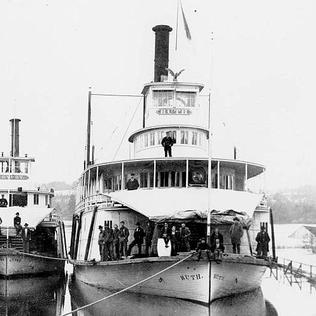
The steamboat Ruth operated from 1896 to 1917 on the Willamette River in the U.S. state of Oregon. Ruth played an important role in the transport of goods and agricultural products in Oregon, and was one of the fastest steamboats ever to operate on the upper Willamette. This vessel should not be confused with the sternwheeler Ruth built at Libby, Montana in 1896.
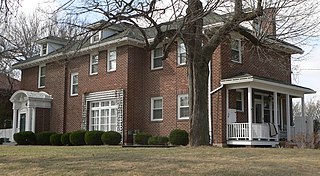
The Sanford House, also known as the Stone House and Summit Mansion, is a historic residence in Sioux City, Iowa. Throughout the 1990s, it was commonly referred to as the “Home Alone house” in reference to the similar looking neocolonial residence featured in the eponymous film that had become a pop culture phenomenon.

The Port of Kansas City is an inland port on the Missouri River in Kansas City, Missouri at river mile 367.1, near the confluence with the Kansas River. Kansas City, the second-largest rail hub and third-largest trucking hub in the country, is on marine highway M-70, which extends as far as Pittsburgh and intersects M-55 at St. Louis, allowing shipping to New Orleans, Chicago, Minneapolis and connections to major cities all over the eastern United States. The Missouri inland waterway allows for barge traffic as far upriver as Sioux City, Iowa; however, most of the commercial traffic on the Missouri is concentrated between Kansas City and St. Louis.

Grant Prince Marsh was a riverboat pilot and captain who was noted for his many piloting exploits on the upper Missouri River and the Yellowstone River in Montana from 1862 until 1882. He started to work as a cabin boy in 1856, eventually becoming a captain, riverboat pilot and riverboat owner, in a career lasting over sixty years. During that time, he achieved an outstanding record and reputation as a river steamboat pilot and captain, serving on more than 22 vessels. His piloting exploits became legendary and modern historians refer to him as "Possibly the greatest steamboat man ever", "possibly the greatest [steamboat pilot] ever", "possibly the finest riverboat pilot who ever lived", "the greatest steamboat master and pilot on both the Missouri and Yellowstone Rivers"
This timeline of South Dakota is a list of events in the history of South Dakota by year.
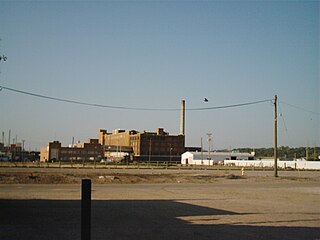
The Swift & Co. meatpacking plant in Sioux City, in the state of Iowa in the Midwestern United States, was built in 1918–19 as a speculative venture under the name Midland Packing Plant. After going into receivership, it was acquired by Swift & Co. in 1924, and continued to operate until 1974. It was then purchased by a Sioux City businessman and converted to an enclosed mall, the KD Stockyards Station. The building was listed in the National Register of Historic Places in 1979.

George Armour was a Scottish American businessman and philanthropist known for his contributions to the global distribution process for commodities. He is credited with developing the grain elevator system, establishing grain trading standards as director and president of the Chicago Board of Trade (CBT), founding the Chicago, Burlington and Quincy Railroad (CBQ), Commercial Club of Chicago, YMCA of Chicago, Merchants' Loan & Trust Company (MLTC), the precursor to Continental Illinois, and the Chicago Academy of Fine Arts which later became the School of the Art Institute of Chicago and Art Institute of Chicago. He served as a director of several notable companies during his career.

The D&I Railroad (DAIR) is a Class III shortline railroad which is a wholly owned subsidiary of L. G. Everist, Inc. The line hauls ethanol, dried distillers grains (DDG), corn oil, plastic pellets, cement, sand, gravel, and Sioux Quartzite, which is mined from two large quarries in Dell Rapids.




